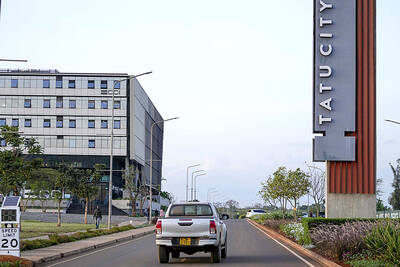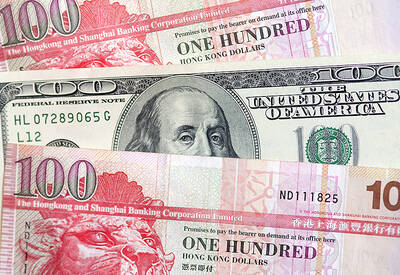Acer Inc yesterday revised downward its revenue growth to less than 40 percent, citing a weaker-than-expected impact from the release of Microsoft's Vista operating system.
"Our revenues will grow 30 percent to 40 percent compared to last year," company chairman Wang Jeng-tang (王振堂) told shareholders yesterday.
more time
He said that it would take more time before PC sales were stimulated by Vista, which was launched in January, because of software compatibility issues.
International Data Corp (IDC) vice president Bob O'Donnell said last month in Taipei that Vista had failed to live up to the hype that had excited the market, with a lukewarm reception especially from the commercial sector.
"The reality is that people are not buying PCs because of Vista; they buy because they need one," O'Donnell said.
remaining positive
Wang said he remained positive on prospects for the PC industry in the second half, but not as "over optimistic" as he had been earlier. Acer sales for the year would not grow by over 40 percent as he had previously projected, he said.
Acer's consolidated sales were up 16 percent from the previous year at NT$369.09 billion (US$11.15 billion) last year. Net income after tax surpassed the NT$10 billion mark for the first time at NT$10.22 billion.
The meeting yesterday approved the payment of a cash dividend of NT$3.85 and a 1.5 percent stock dividend for last year.
strengthen
Wang said that Acer will continue to drive to strengthen its presence in Europe, which is its largest market.
Hewlett-Packard Co's first-quarter notebook shipments to Europe reached 1.38 million units, a 53 percent growth year-on-year, and beat Acer's 1.23 million units to become the No. 1 brand in Europe, IDC said.
Wang said Acer is still growing in the region and will not let down its guard with regard to its competitors.
Acer shares rose 1.13 percent to end the day at NT$61.80 on the Taiwan Stock Exchange yesterday.

To many, Tatu City on the outskirts of Nairobi looks like a success. The first city entirely built by a private company to be operational in east Africa, with about 25,000 people living and working there, it accounts for about two-thirds of all foreign investment in Kenya. Its low-tax status has attracted more than 100 businesses including Heineken, coffee brand Dormans, and the biggest call-center and cold-chain transport firms in the region. However, to some local politicians, Tatu City has looked more like a target for extortion. A parade of governors have demanded land worth millions of dollars in exchange

Hong Kong authorities ramped up sales of the local dollar as the greenback’s slide threatened the foreign-exchange peg. The Hong Kong Monetary Authority (HKMA) sold a record HK$60.5 billion (US$7.8 billion) of the city’s currency, according to an alert sent on its Bloomberg page yesterday in Asia, after it tested the upper end of its trading band. That added to the HK$56.1 billion of sales versus the greenback since Friday. The rapid intervention signals efforts from the city’s authorities to limit the local currency’s moves within its HK$7.75 to HK$7.85 per US dollar trading band. Heavy sales of the local dollar by

Taiwan Semiconductor Manufacturing Co’s (TSMC, 台積電) revenue jumped 48 percent last month, underscoring how electronics firms scrambled to acquire essential components before global tariffs took effect. The main chipmaker for Apple Inc and Nvidia Corp reported monthly sales of NT$349.6 billion (US$11.6 billion). That compares with the average analysts’ estimate for a 38 percent rise in second-quarter revenue. US President Donald Trump’s trade war is prompting economists to retool GDP forecasts worldwide, casting doubt over the outlook for everything from iPhone demand to computing and datacenter construction. However, TSMC — a barometer for global tech spending given its central role in the

An Indonesian animated movie is smashing regional box office records and could be set for wider success as it prepares to open beyond the Southeast Asian archipelago’s silver screens. Jumbo — a film based on the adventures of main character, Don, a large orphaned Indonesian boy facing bullying at school — last month became the highest-grossing Southeast Asian animated film, raking in more than US$8 million. Released at the end of March to coincide with the Eid holidays after the Islamic fasting month of Ramadan, the movie has hit 8 million ticket sales, the third-highest in Indonesian cinema history, Film